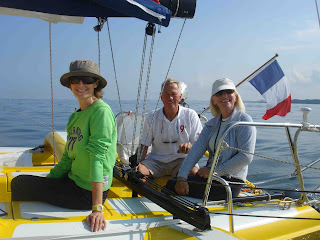Key Seaon (trimaran) parameter: WPSA - and Seaonal Greetings!
Every now and then our “weight paranoia” is brought up again. Obviously we have some regular internal “Hansei” (reflection) on our eternal weight chasing…..and the result is the same every time: Yes it is worth it!
We are not solely in the trimaran performance business – we are in “the sailing is a fantastic experience” business, easy to handle for all …..sailors for now. However everyone in this business has an obligation to mission sailing as a “Climate Smart Leisure Activity”, something I strongly believe we will hear more about going forward.
So, what ‘s the issue with the weight? Before stating our view again, let me first say there is “no one model fit all” solution. Every company has its belief and target believers for their products, so there is no reason to debate who is wrong and who is right.
Our belief: The balance between performance and a boat easy enough to handle. Obviously you could think maximum performance would be our main belief since the Seaon 96crb is fully built in carbon – but it is not. We could have added another 1-2 meters of mast length, thus increased the power of the boat even further. Designing the Seaon 96crb the target was however the opposite – how can we decrease the sail area to make the boat as easy as possible to handle, but still maintaining sailing characteristics enough to also attract the hard to please sailor (which includes ourselves!) or potentially some one that likes the sea but thinks sailing is a dull experience? The answer: focus on weight.
For us WPSA (Weight per Sail Area) is one of the key parameters to evaluate the “sailing experience”. However as stated before – adding sail area to maintain the ratio is not our preferred way to go, since you could very quickly get into heavy and potentially dangerous sail handling issues.
“WPSA:s lines” for a few trimaran models (weights taken from LYS rating certificates in Sweden and sail area from standard boat configuration sheets) would look like the following:
Making a “Pareto” analysis on the WPSA parameter (i.e. not comparing other parameters such like water line length, wet surfaces etc) one could e.g. compare how much additional sail area a certain model A at the given weight would need to achieve the same WPSA line as model B.
At this time I would also like to take the opportunity to send the very best Seaonal Greetings to all of you from all of us at Seaon.
We all hope Santa Clause will be nice to you (usually written as “From Me to Myself” on the package….) bringing something new “absolutely must have" for the boat ……as long as it is light weight!
Merry Christmas and Happy New Sailing Experience Year!
/Jan et all





































